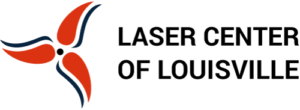Cold Laser Therapy or Low Level Laser Therapy (LLLT) is a form of alternative medicine that uses specific wavelengths of light to improve wound and soft tissue healing, reduce inflammation and provide relief for acute and chronic pain.
History of Low Level Laser Therapy
In 1916, Albert Einstein conceived the theory of stimulated emission of radiation that brought us lasers (Light Amplification through Simulated Emission of Radiation or LASER). Then in 1967, just a few years after the first working laser was invented, a Hungarian physician named Endre Mester in Semmelweis University in Budapest began experimenting on the biological effects of laser irradiation. Mester noticed that, while applying lasers to the backs of shaven mice, the shaved hair grew back more quickly on the laser-treated group than the untreated group. Soon, Dr. Mester began using laser to treat patients with non-healing skin ulcers (1,2). Dr. Mester is credited with the discovery of low level laser therapy.
Low Level Laser Therapy or LLLT is a form of alternative therapy that applies low-power lasers or light-emitting diodes (LEDs) to the body’s surface to relieve pain, reduce swelling, or stimulate and enhance cell function. This differs from high-power thermal lasers which are used in laser medicine to cut or destroy tissue.
Laser Categories
Medical lasers are classified into three categories according to their power output:
- Class 3A – maximum of 5 milliwatts of power (standard laser pointer)
- Class 3B – maximum of 500 milliwatts of power/0.5 watts
- Class 4 – over 500 milliwatts of power/0.5 watts
The clinical use of lasers hinges on the depth of penetration. Using low-power Class 3 lasers, which basically amount to a standard laser pointer, won’t be very helpful for treating deep-seated conditions. Most class 3a lasers only use a red wavelength, and red laser light only penetrates about one to two millimeters into the human body. This can be highly useful for treating surface wounds, cuts, and abrasions. On the other hand, infrared lasers (around 800 nanometers) are able to penetrate deeper into the body, enabling the treatment of most tissue injuries.
How Low Level Laser Therapy Works
Cold lasers are handheld devices, usually the size of a flashlight, which are operated by medical specialists. The device is then placed directly over the injured area. The length of time that the device is placed on a particular area ranges from 30 seconds to several minutes, depending on the size of the area being treated and the dose recommended.
During the treatment, photons of light are emitted by the device which pass through the skin’s layers and interact with the tissue at the cellular level. This interaction, which can be compared to photosynthesis in plants, causes the occurrence of certain photochemical reactions and therapeutic effects, and stimulates the natural biological process and creates physiological changes, such as:
- Rapid cellular growth
- Faster wound healing
- Increased metabolic activity
- Reduced scar tissue formation
- Reduced pain
- Reduced inflammation
- Increased blood circulation
- Stimulates nerve function
Benefits of Cold Laser Therapy
The U.S. Food and Drug Administration has approved certain low-level laser devices for the relief of such conditions as (3,4):
- Muscle and joint pain
- Arthritis-related stiffness
- Pain associated with muscle spasms
- Carpal Tunnel Syndrome-related hand and wrist pain
- Neck pain
- Lower back pain
- Wound healing
References:
- Mester E, Nagylucskay S, Döklen A, Tisza S Acta Chir Acad Sci Hung. Laser stimulation of wound healing. 1976; 17(1):49-55.
- Mester E, Szende B, Spiry T, Scher A Acta Chir Acad Sci Hung. Stimulation of wound healing by laser rays.1972; 13(3):315-24.
- Hurwitz, EL, Carragee EJ, vander Velde G, et al. Treatment of neck pain: noninvasive interventions: Results of the bone and joint decade 2000-2010 task Force on neck pain and its associated disorders. Spine 2008;33:S123-152.
- Hopkins, JT, McLoda TA, Seegmiller JG, Baxter GD. Low-level laser therapy facilitates superficial wound healing in humans: A triple-blind, sham-controlled study. J Athl Train. 2004 Jul–Sep; 39(3): 223–229.

